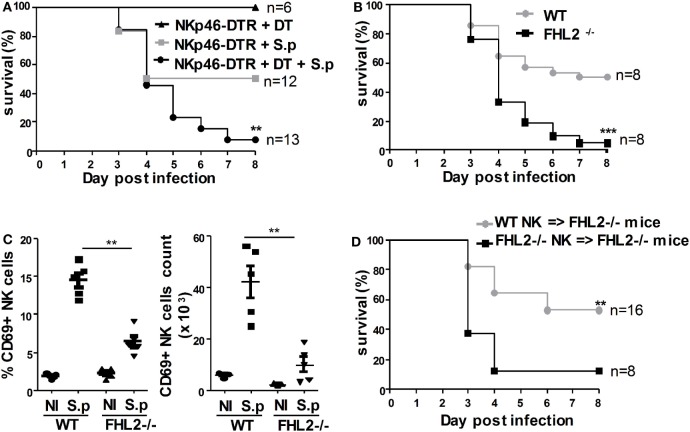Figure 3.
The natural killer (NK) cell defect of FHL2−/− mice enhances their susceptibility to Streptococcus pneumoniae infection. Mice were infected i.n. with 5 × 105 cfu (LD50) S. pneumoniae. (A) NKp46(iCre) R26R(DTR) mice were untreated (gray plot) or treated (black circle) with diphtheria toxin (4 ng/g) twice, 24 h before and 24 h after infection. (B) FHL2−/− mice (black plot) and wild-type (WT) mice (gray circle) were infected with S. pneumoniae. (C) Flow cytometric analysis of CD69 expression on lung NK cells. Each dot represents the data obtained for one mouse. Experiment representative of four independent experiments. **p < 0.01 by Mann–Whitney test. (D) Purified NK cells from FHL2−/− mice (FHL2−/− NK cells → FHL2−/− mice; black plot) or WT mice (WT NK cells → FHL2−/− mice; gray circle) were i.v. injected in FHL2−/− recipient mice at the time of infection. (A,B,D) Survival is shown for two or three independent experiments pooled together. Statistical analysis was performed using the Mantel–Cox test (**p < 0.01, ***p < 0.001). The surviving mice were kept until day 10 postinfection. None died after day 7. (B) Data were confirmed using FHL2+/+ littermate mice.

